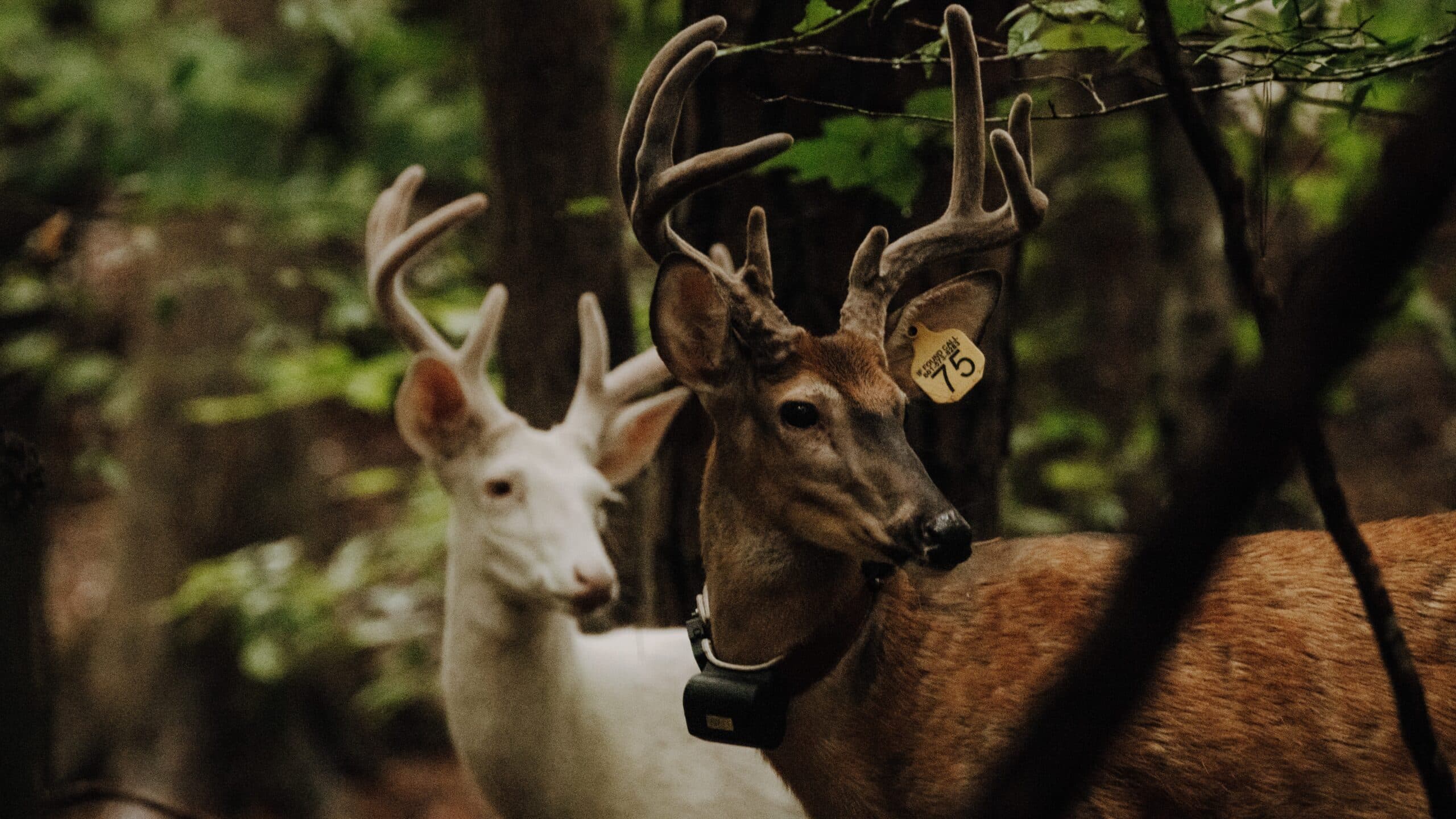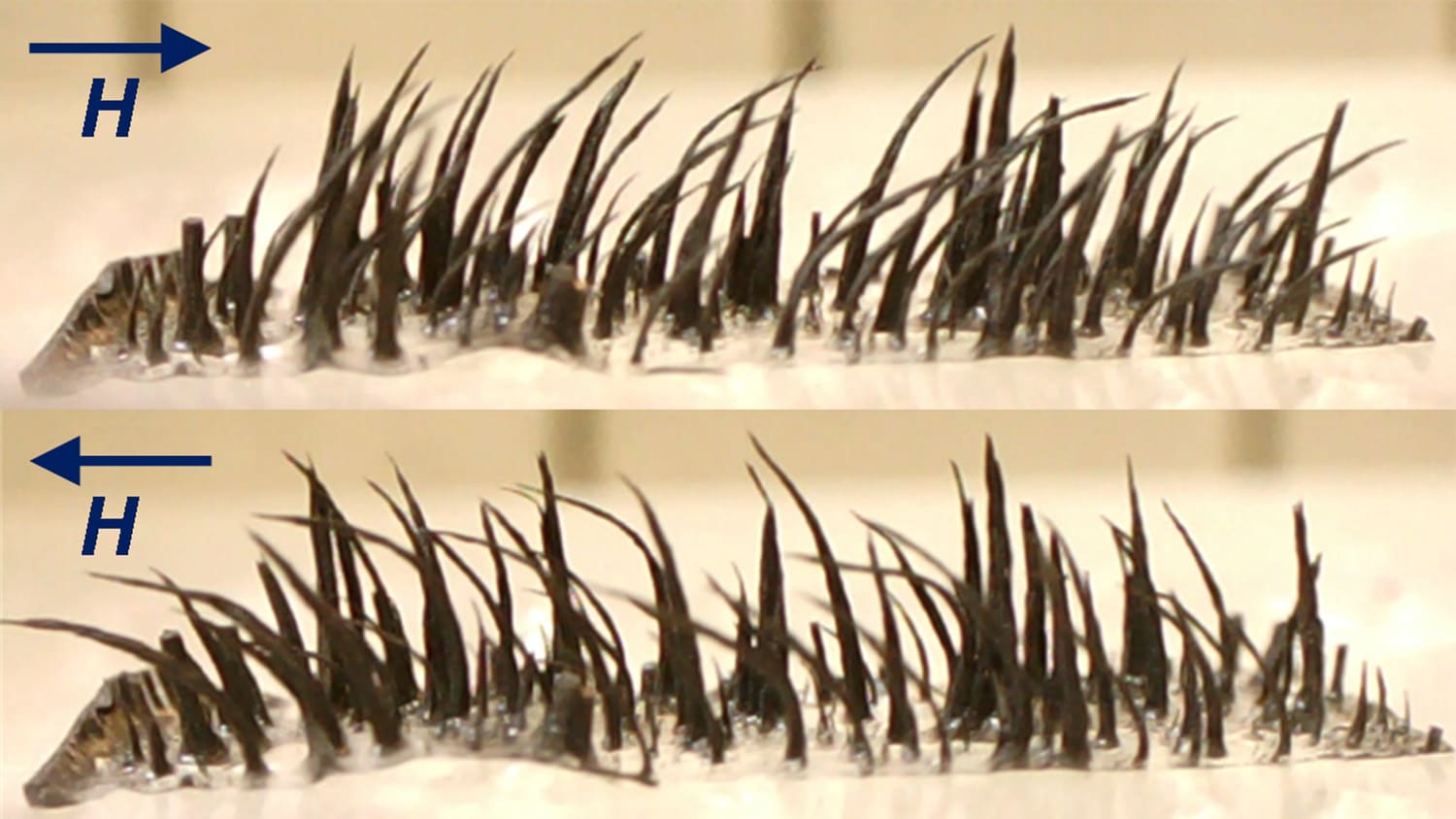Scientists Track Triangle Deer to Learn How They Deal With Development

North Carolina State University wildlife researchers want to know intimate details about your neighbors – the furry ones with tails and hooves, that is. In a study launched this year, researchers are tracking white-tailed deer as they move around cities, suburbs and rural areas in the Triangle.
The scientists hope to find out how deer and other wildlife will cope as the state continues to grow and develop.
“One of the ways you can evaluate the impact of increasing suburbanization of the landscape is to see how an animal population changes over time,” said Nathan Hostetter, the study’s lead scientist and an assistant professor in NC State’s Department of Applied Ecology. “But, what if, instead of studying deer populations across time, we study them across space? We want to understand how deer use suburban, rural and urban areas. If we can understand that, we can understand what may happen if the landscape increases in urbanization over time.”
The Triangle Urban Deer Study team includes experts looking at how people perceive and interact with deer; doing genetic analysis of deer feces to estimate their abundance; as well as tracking deer survival, causes of mortality and movement. The Abstract spoke to Hostetter; Chris Moorman, professor and associate head of NC State’s Department of Forestry and Environmental Resources; and Mikiah Carver-McGinn, a graduate student at NC State, about the project, common misconceptions about their work and how you might be able to help.
The Abstract: Why are you doing this study now?
Carver-McGinn: Cities are growing. Wildlife are going to have to change as urbanization expands. White-tailed deer are a great case-study species because they do well in moderately urbanized areas. We can use deer to try to see how other wildlife could react to increasing urbanization.
Moorman: In addition to understanding deer movement and survival, as well as the specific causes of mortality, we also want to understand how people perceive different options to manage deer populations as North Carolina becomes an urbanized state. As suburban areas expand, there might be a bit of a squeeze where deer are thriving, but hunters and the agency responsible for managing wildlife in our state, the North Carolina Wildlife Resources Commission, may not have access to use hunting as a tool to manage deer populations. Where deer become overabundant, collisions with vehicles, damage to suburban gardens and over browsing of plant communities can be significant.
TA: How can Triangle residents get involved?
Carver-McGinn: We’ve got two technicians working until November going door-to-door, asking if people want to be involved by allowing us to access to their properties. It’s an important way people can help. We have a lot of suburban sites at the moment; we’re looking for more urban and rural sites.
We’re focused on Durham County, as well as eastern Orange County around Hillsborough. Many of the deer we’re tracking so far are around Eno River State Park. There is a big population of deer there. Next year, we are focusing on more rural spots near Rougemont and Bahama and urban spots closer to downtown Durham.
The big thing is we need the property to be large enough for us to be able to trap and tag the deer. If people are interested in letting us use their property, we like to come out and see what our trapping options are going to be on the property before we attempt to catch deer.
TA: When will you be trapping deer again, and how does it work?
Hostetter: After we make landowner contact, we verify that it’s a good location, set up poles and a bait station, the net, and put a camera out. We’ll monitor deer in that area for days to weeks. That will tell us what time of day the deer come to that site to inform when we will capture and tag. We would never capture an animal unless we’re present, and our nets don’t capture any other animals.
The project includes three years of trapping, including this year. We capture deer in the spring and we track them for a least a year. We’ll be trapping deer again in January-April 2023, and again in 2024.
Carver-McGinn: In terms of capture and tagging, it’s a waiting game. We often have to wait at the trapping location for hours before deer will come.
TA: What does the movement data tell you?
Carver-McGinn: After we capture the deer, we put a collar on them that has a GPS tracker. That allows us to get movement and location information every two hours. So, we might capture a deer in what we would consider is a rural spot. Immediately after she’s captured, she might go into a suburban development and spend the rest of her time there. These collars allow us to get data on where the deer choose to live.
They also notify us if they haven’t moved for four hours – we’ll get a mortality notification. We’ll go out, and we’ll assess and try to figure out what the cause of death is. We also get survival and reproduction data, and other information that we can tie back to this movement data, as well as samples to assess presence of COVID-19 and other diseases. That is part of a project to assess whether COVID is present in this deer population and possibly more prevalent in suburban versus urban or rural deer.
TA: Are there any major misconceptions you’ve had so far about the project?
Carver-McGinn: We sometimes get questions about the collars we put on fawns. Those collars grow with the deer. The collar will expand with them.
TA: Are there any cool deer facts you’ve learned so far?
Carver-McGinn: My biggest takeaway so far is deer are individual beings. They have their own agency. Some of them don’t care about anything. For others, the wind shifts one degree and they’re out of there. Deer are fascinating creatures.
Moorman: We haven’t analyzed our data yet, but we know that deer activity generally peaks at dawn and dusk. However, we’d like to know if deer activity patterns are different depending on whether they’re in a suburban, urban or rural location. It may be that if suburban deer are more active during the day, then they potentially have less risk of predation.
Also, we’re interested in how fawn survival compares to what we observed in a recent study on Fort Bragg. It’s possible that some female deer move into suburban areas to drop their fawns, even in fenced areas, because they’re protected from predation there. But first, we’ve got to establish a baseline for deer in rural areas, so we can compare to what’s going on in the suburban and urban areas.
The study is funded by the North Carolina Wildlife Resources Commission.
If you own property in Durham or eastern Orange counties, see
deer regularly, and would allow the research team to capture and
collar deer on your property, please send an email to:
TriangleUrbanDeerStudy@ncsu.edu.
This post is part of a series focused on field work at NC State.
- Categories:


